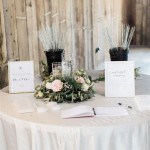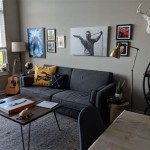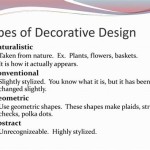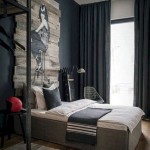How to Decorate Rustic Style Houses in Minecraft Java Edition 1.21
Rustic architecture in Minecraft evokes a sense of warmth, simplicity, and connection to nature. It typically features natural materials, rough textures, and a design aesthetic that emphasizes functionality over elaborate ornamentation. Achieving this style in Minecraft Java Edition 1.21 requires careful selection of blocks and decorative elements to create an authentic and inviting atmosphere. From humble farmsteads to cozy mountain lodges, the rustic style offers a versatile foundation for crafting unique and aesthetically pleasing structures.
The key to successful rustic decoration in Minecraft lies in understanding the core principles of the style. This involves a focus on natural materials like wood, stone, and terracotta; an appreciation for exposed structural elements; and the incorporation of functional objects that add character and visual interest. This detailed guide explores essential techniques and design considerations for decorating rustic-style houses in Minecraft Java Edition 1.21.
Choosing the Right Building Materials
Material selection forms the cornerstone of any rustic build. Wood, in its various forms, is indispensable. Oak logs, stripped oak logs, planks, and stairs are all essential components. Darker wood variations, such as spruce and dark oak, can be incorporated for contrast and to add depth to the color palette. Cobblestone and stone bricks are crucial for foundations, chimneys, and other structural elements. These materials provide the necessary texture and visual weight that define the rustic aesthetic.
Terracotta and brick are also valuable additions. Terracotta, especially in earthy tones like brown and orange, introduces warmth and natural color variations. Brick can be used for fireplaces, wall accents, and flooring, offering a refined yet grounded appearance. Consider using mossy cobblestone and moss blocks to create a sense of age and history. These elements contribute to the feeling that the structure has been weathered and integrated into its surroundings.
Gravel paths and dirt patches around the house further enhance the rustic charm. These small details suggest a building that has been organically incorporated into the landscape. Experiment with different combinations of these materials to find the balance that best suits the desired aesthetic. The interplay of textures is just as important as the colors themselves, and the variety within natural blocks provides ample opportunities for creative expression.
Copper, a relatively newer material in Minecraft, can also find a place in rustic builds, particularly for roofs and decorative details. Its oxidation over time adds a realistic touch, mimicking the aging process seen in real-world rustic structures. Weathered copper roofs provide a striking visual element, contrasting beautifully with the wooden and stone elements of the house.
Implementing Interior Design Techniques
The interior design of a rustic house should echo the exterior's emphasis on natural materials and functionality. Open floor plans, exposed beams, and large fireplaces are common features. Furniture should be simple and sturdy, crafted from wood and other natural materials. Avoid overly ornate or modern decorations. Instead, focus on items that suggest a practical, lived-in space.
Lighting plays a crucial role in creating the desired ambiance. Lanterns, candles, and strategically placed campfires can provide soft, warm light that enhances the cozy atmosphere. Avoid using too much bright, artificial light, as it can detract from the rustic charm. The use of tinted glass in windows can also help to filter the light and create a warmer, more inviting interior.
Rugs and carpets made from wool or other natural fibers add warmth and texture to the floors. Simple patterns and earthy colors work best. Consider using animal skins, such as rabbit hides, as decorative floor coverings. Bookshelves filled with books and decorative items can add a sense of personality and character to the space. Display tools, pottery, and other functional objects as decorative elements to emphasize the rustic theme.
Utilizing the new crafter block cautiously can bring a hint of automation to the rustic interior without breaking the theme. Concealing the crafter within a kitchen area or workshop can subtly inject modern functionality into the otherwise rustic design. Ensure the mechanism is hidden and the output is tastefully integrated.
Details such as barrels, crates, and flower pots can further enhance the interior. These items can be used to store items, display plants, or simply add visual interest. Hanging pots and baskets filled with flowers or herbs bring a touch of nature indoors. Pay attention to the placement of these details to create a balanced and visually appealing interior space.
Adding Functional and Decorative Elements
Functional elements can double as decorative features in a rustic setting. A well-placed grindstone can add a touch of practicality to a blacksmith's corner, while a brewing stand can serve as a decorative element in a potion-making area. Utilize these elements to create a sense of purpose and activity within the house.
Gardens and farms are essential components of the rustic lifestyle. Incorporate vegetable patches, wheat fields, and animal pens into the landscape surrounding the house. These elements not only provide resources but also add to the overall charm and authenticity of the build. Consider building a small apiary to add a touch of sweetness to the rustic landscape.
Stone pathways and wooden fences can help to define the boundaries of the property and create a sense of enclosure. Use these elements to guide visitors through the landscape and highlight key features. A well-placed water well or a small pond can also add to the rustic charm of the property. Be mindful of the natural contours of the land and try to integrate these elements seamlessly into the existing landscape.
Utilizing armor stands to display worn-out tools or old armor pieces adds a touch of storytelling to the rustic design. These stands can depict a history of the inhabitant, subtly hinting at the struggles and triumphs of their life. Old, damaged tools imply hard work, while a set of dented armor suggests past battles.
The use of custom item frames with maps or artwork adds a personal and unique touch to the walls. These decorations can reflect the interests and history of the character inhabiting the space. A map of the surrounding area can contribute to the sense of immersion, while artwork provides a visual expression of the character's personality.
Landscaping for Rustic Appeal
The landscape surrounding a rustic house is just as important as the house itself. Natural, unkempt vegetation, winding paths, and strategically placed rocks can enhance the overall sense of authenticity. Avoid overly manicured lawns and formal gardens. Instead, embrace the natural imperfections of the environment.
Trees and shrubs are essential elements of the rustic landscape. Plant a variety of trees, including oak, spruce, and birch, to create a natural forest setting. Use shrubs and bushes to add texture and ground cover. Consider planting wildflowers and other native plants to attract bees and butterflies. These small details can bring the landscape to life and create a more immersive experience.
Water features, such as streams, ponds, and waterfalls, can also add to the rustic charm of the landscape. These elements can create a sense of tranquility and provide a habitat for wildlife. Use natural stone and vegetation to create a natural-looking water feature. Be mindful of the water flow and ensure that the water appears to be naturally occurring.
Integrating the landscape with the house is crucial for creating a cohesive and authentic rustic environment. Use vines and climbing plants to soften the edges of the house and blend it with the surrounding vegetation. Consider building a pergola or a covered porch to provide a sheltered outdoor space. These features can extend the living space of the house and create a seamless transition between the interior and exterior.
Adding details such as broken fences, overgrown pathways, and scattered leaf piles give the surrounding area a lived-in and naturally aged feeling. These details help accentuate the passage of time, adding to the rustic charm and creating an immersive experience.
The thoughtful combination of these elements results in a rustic house that feels both functional and inviting, deeply rooted in its Minecraft environment and reflective of the simple beauty of nature.

How To Build A Rustic Farm House In Minecraft

Minecraft How To Build A Cozy Rustic House Tutorial

Minecraft Rustic House Tutorial

Minecraft Aesthetic Rustic Tulip Cottage Build Java 1 17 With Me

Minecraft Starter House Rustic Survival Tutorial

Cottage Rustico Di O In Minecraft

Rustic Minecraft House Tutorial Minecrafttiktok Minecraftbuilding

Ultimate Rustic Mansion Tutorial Full Walkthrough Design Tips

Minecraft Medieval House Tutorial Easy

A Minecraft Island House Is Scenic Build On Small Using Natural Materials Like Wood Stone And Glass To Blend With The Landscape These Homes Often Feature Open Designs Decks Docks
Related Posts







